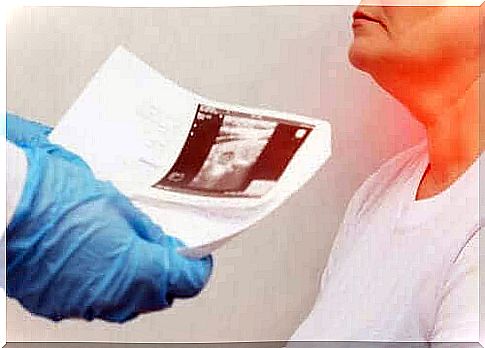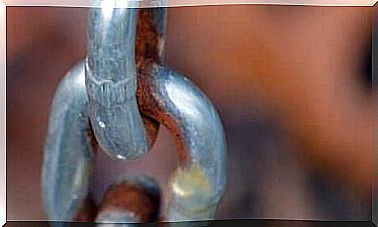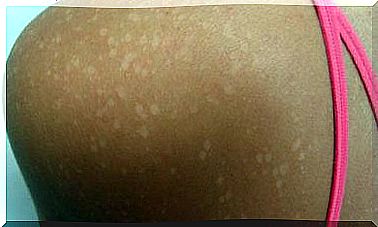Thyroid Nodules: Symptoms And Causes

Thyroid nodules, or nodules, are excessive cell growth that form in the form of bumps or swellings in the thyroid gland. Some of them are noticeable by simple palpation, but many nodules are too small to be noticed by palpation and cannot be identified by palpation, for example, from the neck area.
Thyroid nodules can be solid or cystic. Cystic nodules, in turn, are filled with fluid and are covered by capsules. However, the solid nodules are completely solid.
The thyroid nodules may be located in different parts of the thyroid gland. The thyroid glands themselves consist of two blocks that are interconnected by a thin strip of tissue. This gland is located in the neck and under normal circumstances you cannot feel it by feeling it in your neck.
Because one of the functions of the thyroid gland is to produce T3 and T4 hormones, the nodule located in this gland can be functional. This means that it is able to secrete hormones, right where normal tissue is. However, in such cases, symptoms associated with hormone overproduction occur.
Most thyroid nodules are benign and many doctors accidentally detect them in studies of another medical problem. In any case, since a small proportion of nodules may be a symptom of thyroid cancer, the patient must always go for complementary tests to get a definitive diagnosis of thyroid nodules.
What causes thyroid nodules?
Here are some of the most common reasons why nodules in the thyroid gland occur:
Iodine deficiency in the diet
If you do not get enough iodine from the foods you eat, you may develop nodules or nodules in the thyroid gland. This classic and historical cause of thyroid disease has led to a legislative obligation in several countries to add iodine artificially to many foods, including table salt.
These laws were passed at a time when goiter, or swelling of the neck, occurred extensively around the world due to iodine deficiency.
Thyroiditis
This term refers to inflammation of the thyroid gland. When the inflammation is chronic and persistent, it can also cause nodules in the thyroid gland. One of the most common forms is Hashimoto’s thyroiditis, the symptoms of which include e.g. hypothyroidism.

Reproduction of normal thyroid cells
Under some conditions, normal thyroid cells grow disproportionately and form a nodule. This is called thyroid adenoma and is benign.
The problem is that the adenoma may also be functional. In other words, it can also be able to produce hormones and add them to a person’s blood. This can cause a person to suffer from hyperthyroidism.
Accumulation of fluid
The thyroid nodules can also be cystic, i.e. they can also be fluid-filled cavities. They are benign and usually do not work, so they are unable to produce the hormones themselves.
Reproduction of malignant cells
The most dangerous form of thyroid nodules is thyroid cancer. Fortunately, its share of cases is quite small. With early diagnosis, its treatment and surgery can prevent the cancer from spreading.
Symptoms caused by nodules of the thyroid gland
Thyroid nodules usually do not cause symptoms at all because they are usually small and dysfunctional. In many cases, they are quite accidentally found on an ultrasound of the thyroid gland, or on a CT scan of the neck area that the patient receives for another reason.
When the nodule is detectable from the outside by neck palpation, the patient must have a relatively large formation. The doctor may detect these situations during a physical examination, or sometimes the patient will notice the nodules themselves.
If a patient has symptoms other than the observed nodule, such as weight loss, heavy sweating, changes in heart rate, or difficulty swallowing, the nodule may be malignant. Although the final diagnosis may be benign, the occurrence of these symptoms forces the acceleration of complementary methods to confirm this.
On the other hand, in the case of functional thyroid nodules, which are able to produce hormones and increase them in the bloodstream, then the symptom is hyperthyroidism. The patient suffers from tachycardia, weakness, nail and hair changes, diarrhea, irritability and does not gain weight despite increased food intake.
Thyroid nodules – diagnosis
When a thyroid nodule is detected by palpation, or in connection with a test for another cause, your doctor will ask for a series of different diagnostic tests to confirm the diagnosis. These studies include:
- Dosage of thyroid hormones. With blood tests that measure T4 and TSH levels.
- Ultrasound of the thyroid gland. If it has not been done before, this test is the first step in examining the thyroid nodule. First, it allows the medical professional to distinguish between solid and cystic nodules, as well as the ability to measure nodule size.
- Needle biopsy. If the doctor suspects that the nodule is malignant, he will order a biopsy, or sampling. It involves inserting a very thin needle into the gland to allow cells to collect from the gland and then analyzing them under a microscope. Based on current guidelines, the patient can undergo this examination without requiring him or her to remain in hospital. Doctors usually take a biopsy under local anesthesia.
In summary
Thyroid nodules can occur as a result of several diseases that can affect thyroid health. Although they are usually benign, a proper diagnosis must be made to confirm this. Therefore, it is essential that you ask your doctor for advice if you notice signs of thyroid nodules in yourself.









